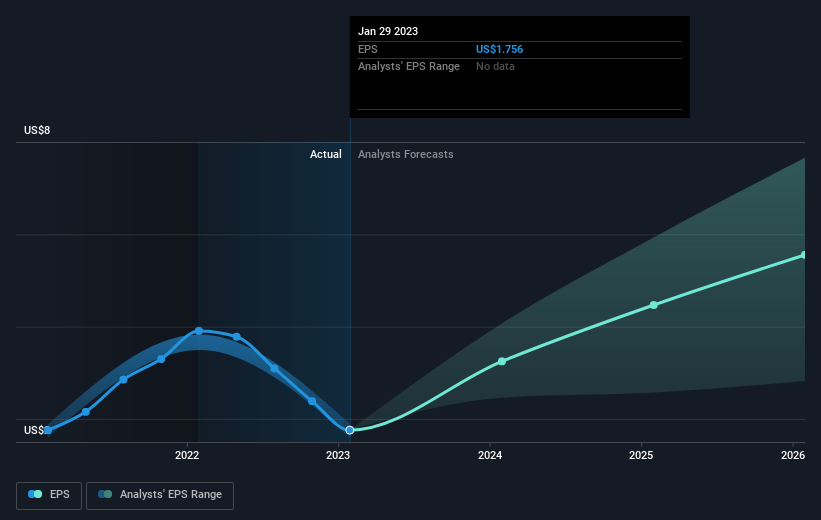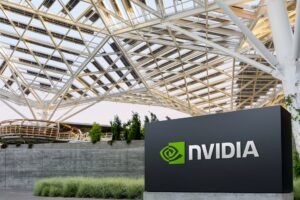When you buy a stock there is always a possibility that it could drop 100%. But on the bright side, if you buy shares in a high quality company at the right price, you can gain well over 100%. For instance, the price of NVIDIA Corporation (NASDAQ:NVDA) stock is up an impressive 295% over the last five years. Also pleasing for shareholders was the 49% gain in the last three months. This could be related to the recent financial results, released recently – you can catch up on the most recent data by reading our company report.
The past week has proven to be lucrative for NVIDIA investors, so let’s see if fundamentals drove the company’s five-year performance.
See our latest analysis for NVIDIA
In his essay The Superinvestors of Graham-and-Doddsville Warren Buffett described how share prices do not always rationally reflect the value of a business. One imperfect but simple way to consider how the market perception of a company has shifted is to compare the change in the earnings per share (EPS) with the share price movement.
During five years of share price growth, NVIDIA achieved compound earnings per share (EPS) growth of 6.9% per year. This EPS growth is slower than the share price growth of 32% per year, over the same period. So it’s fair to assume the market has a higher opinion of the business than it did five years ago. And that’s hardly shocking given the track record of growth. This optimism is visible in its fairly high P/E ratio of 131.46.
The graphic below depicts how EPS has changed over time (unveil the exact values by clicking on the image).
Before buying or selling a stock, we always recommend a close examination of historic growth trends, available here.
What About Dividends?
As well as measuring the share price return, investors should also consider the total shareholder return (TSR). Whereas the share price return only reflects the change in the share price, the TSR includes the value of dividends (assuming they were reinvested) and the benefit of any discounted capital raising or spin-off. It’s fair to say that the TSR gives a more complete picture for stocks that pay a dividend. We note that for NVIDIA the TSR over the last 5 years was 299%, which is better than the share price return mentioned above. This is largely a result of its dividend payments!
A Different Perspective
While it’s certainly disappointing to see that NVIDIA shares lost 4.4% throughout the year, that wasn’t as bad as the market loss of 10%. Longer term investors wouldn’t be so upset, since they would have made 32%, each year, over five years. In the best case scenario the last year is just a temporary blip on the journey to a brighter future. While it is well worth considering the different impacts that market conditions can have on the share price, there are other factors that are even more important. To that end, you should be aware of the 3 warning signs we’ve spotted with NVIDIA .
Of course NVIDIA may not be the best stock to buy. So you may wish to see this free collection of growth stocks.
Please note, the market returns quoted in this article reflect the market weighted average returns of stocks that currently trade on US exchanges.
Have feedback on this article? Concerned about the content? Get in touch with us directly. Alternatively, email editorial-team (at) simplywallst.com.
This article by Simply Wall St is general in nature. We provide commentary based on historical data and analyst forecasts only using an unbiased methodology and our articles are not intended to be financial advice. It does not constitute a recommendation to buy or sell any stock, and does not take account of your objectives, or your financial situation. We aim to bring you long-term focused analysis driven by fundamental data. Note that our analysis may not factor in the latest price-sensitive company announcements or qualitative material. Simply Wall St has no position in any stocks mentioned.
Join A Paid User Research Session
You’ll receive a US$30 Amazon Gift card for 1 hour of your time while helping us build better investing tools for the individual investors like yourself. Sign up here









